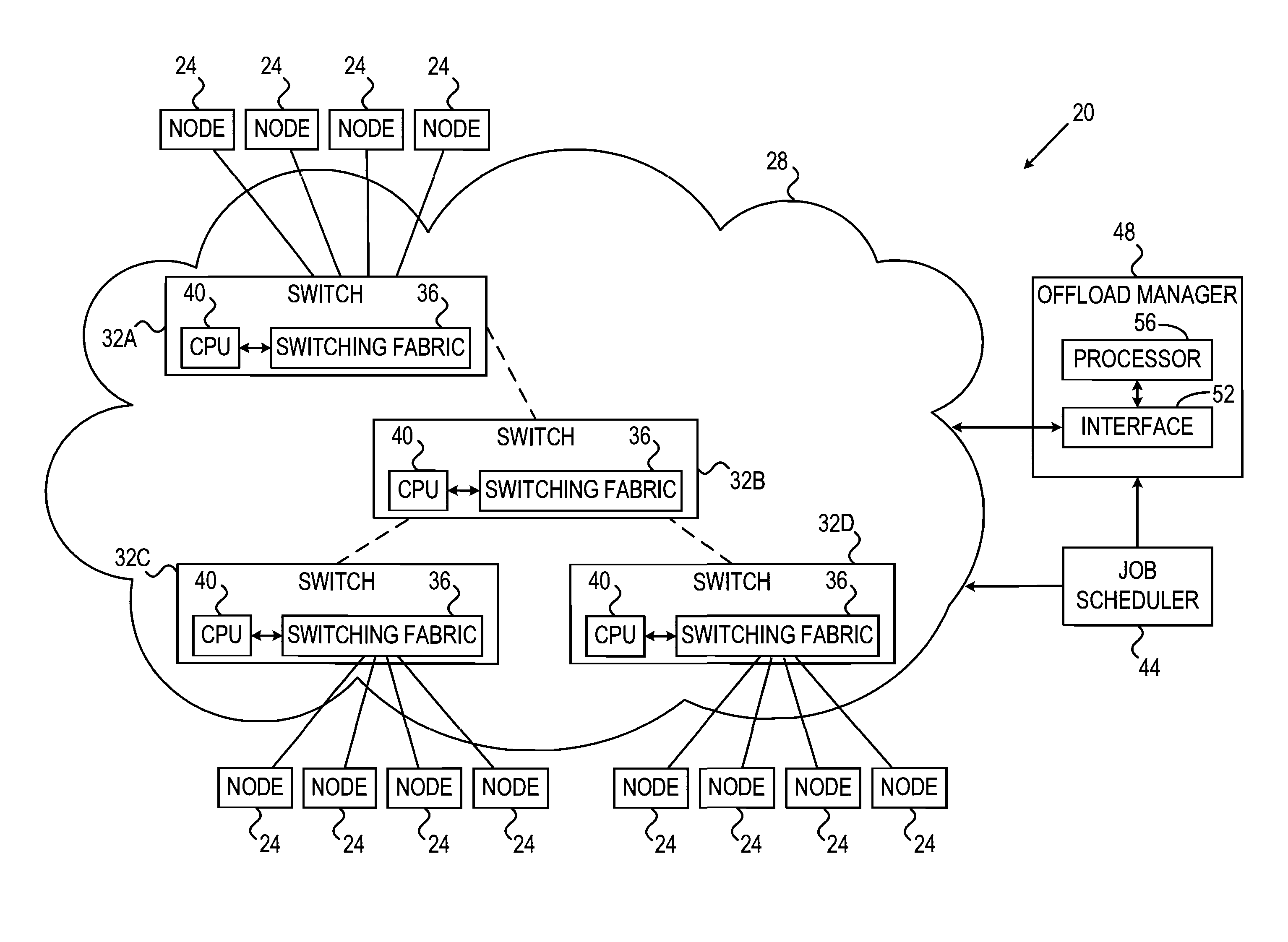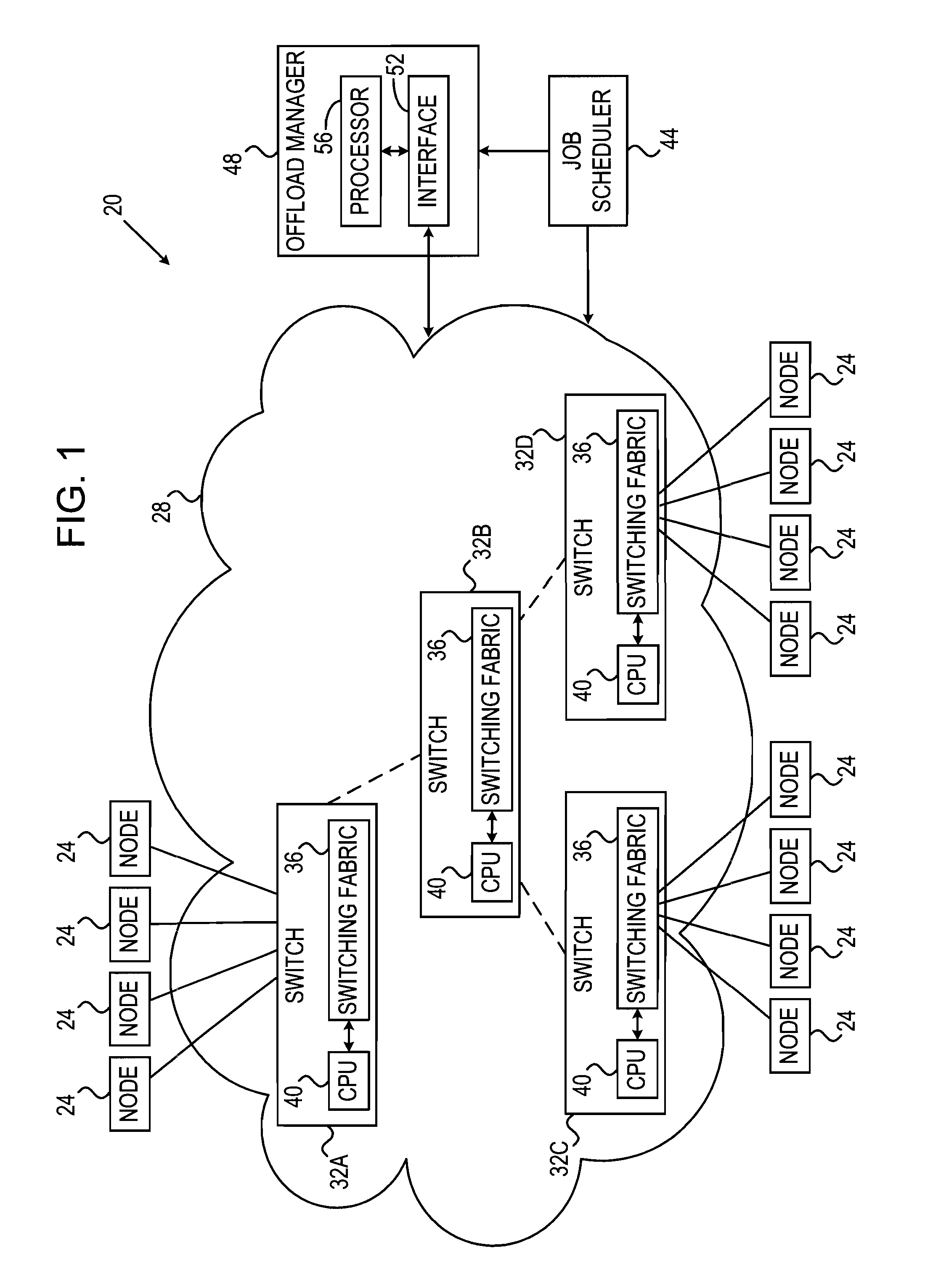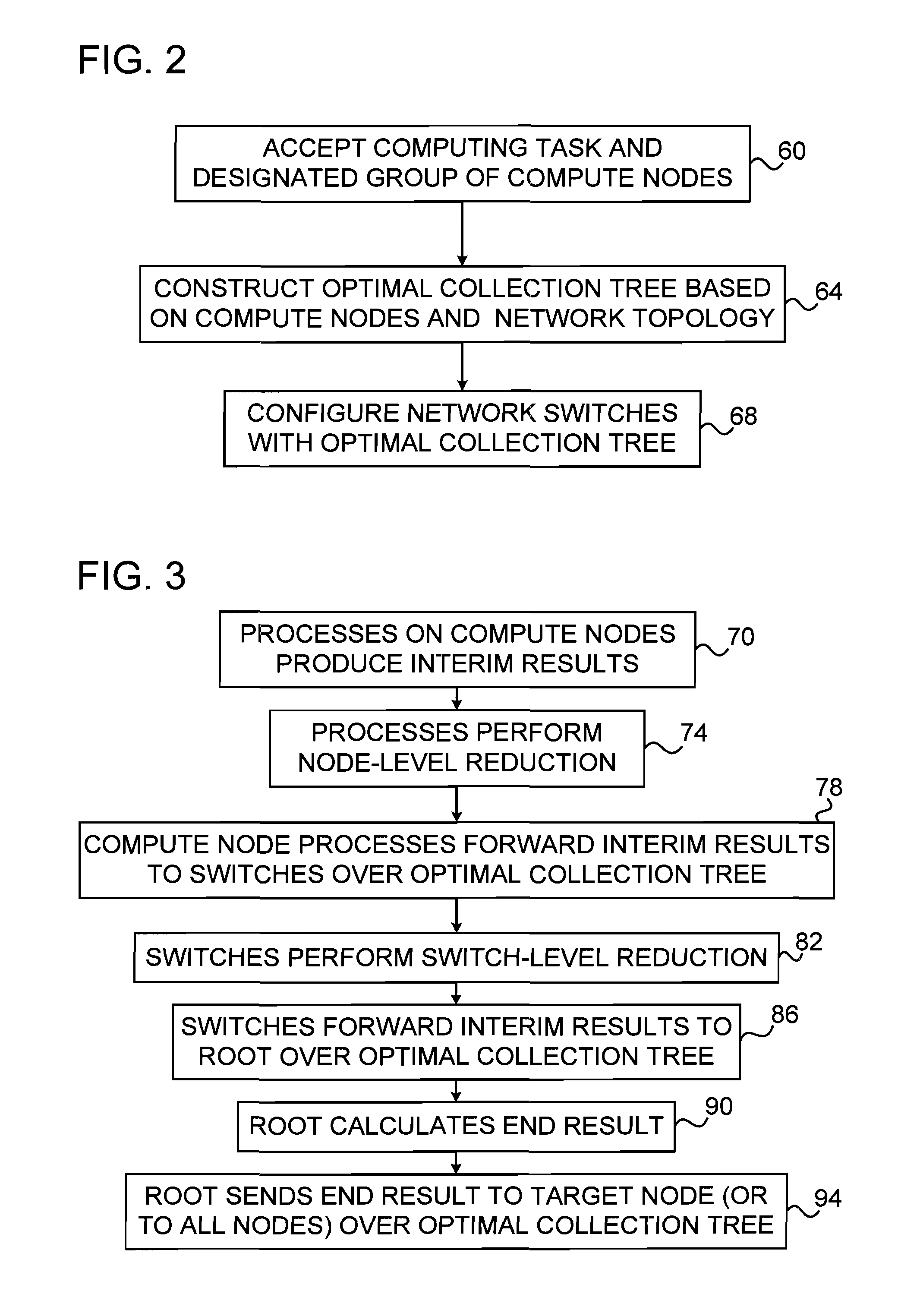Topology-Aware Fabric-Based Offloading of Collective Functions
a topology-aware, fabric-based technology, applied in the direction of instruments, digital computers, computing, etc., can solve the problems of large and complex computing tasks that are sometimes carried ou
- Summary
- Abstract
- Description
- Claims
- Application Information
AI Technical Summary
Benefits of technology
Problems solved by technology
Method used
Image
Examples
Embodiment Construction
Overview
[0026]Collective functions comprise various computation and communication functions that are carried out collectively by multiple software processes, typically running on multiple compute nodes. Reduction functions are a specific type of collective functions, which collect data from multiple processes and process the data to produce an end result (“reduce the data to an end result”). For example, the MPI specification defines an MPI_REDUCE function, which collects data from a group of processes, performs a certain operation (e.g., sum, maximum or minimum) on the data, and sends the end result to one of the processes. An MPI_ALLREDUCE function is similar to MPI_REDUCE, but sends the end result to all the processes in the group. In many distributed computing applications, and particularly in large scale applications having large numbers of processes and nodes, collective functions account for a significant portion of the overall application run time.
[0027]Embodiments of the pr...
PUM
 Login to View More
Login to View More Abstract
Description
Claims
Application Information
 Login to View More
Login to View More - R&D
- Intellectual Property
- Life Sciences
- Materials
- Tech Scout
- Unparalleled Data Quality
- Higher Quality Content
- 60% Fewer Hallucinations
Browse by: Latest US Patents, China's latest patents, Technical Efficacy Thesaurus, Application Domain, Technology Topic, Popular Technical Reports.
© 2025 PatSnap. All rights reserved.Legal|Privacy policy|Modern Slavery Act Transparency Statement|Sitemap|About US| Contact US: help@patsnap.com



